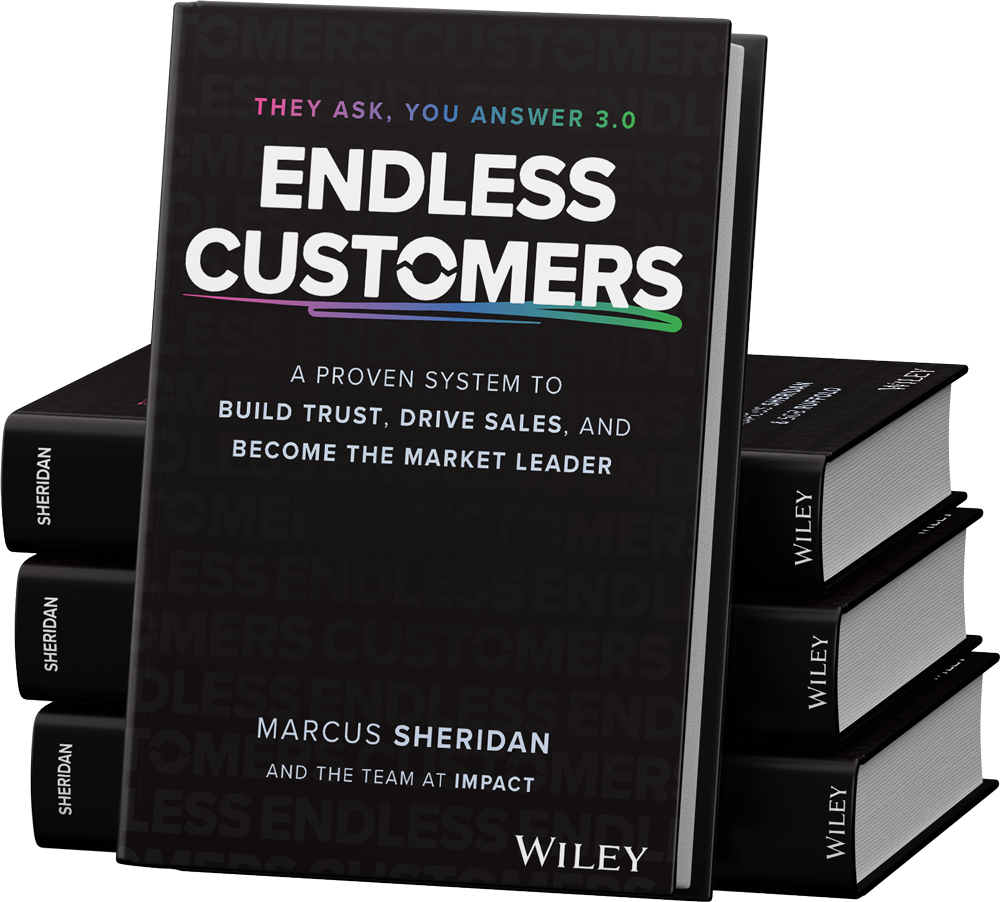Subscribe now and get the latest podcast releases delivered straight to your inbox.
Common Mistakes Businesses Make When Implementing Endless Customers

Sep 14, 2025

The kickoff was promising. Leadership nodded, marketing got to work, and content started flowing.
But now, a few months in, something’s off.
Sales isn’t using the content. Conversations feel disconnected. The weekly publishing rhythm feels more like checking a box than building momentum. What once looked like buy-in is starting to look like polite compliance.
If that feels familiar, you’re not alone.
This is the phase where some Endless Customers implementations stall. Not because the strategy doesn’t work, but because a few critical habits haven’t taken hold. The good news? Every breakdown you’re seeing is a signal that points to what needs fixing.
This article will help you spot the most common breakdowns, understand what’s really behind them, and show you how to course-correct before momentum slips away completely.
What Are the Signs of Stalled Implementation?
If your team has started implementing Endless Customers but progress feels slow, these signals can help you see where traction is breaking down:
- Sales isn’t using content in conversations or referencing it in meetings
- Revenue team discussions are siloed by function instead of aligned around buyer trust
- The content being published doesn’t reflect the real questions buyers are asking
- There’s no visibility into what’s being created or how topics are chosen
- Success is being measured in traffic and impressions instead of usage and trust
- Leadership has gone quiet, and the early momentum has started to fade
None of this means the strategy isn’t working, but it does tell us certain habits haven’t taken root yet. Once you can name what’s missing, you can rebuild momentum in the right direction.
Seven Common Mistakes That Stall Progress
These are the common problems we see, and how we recommend fixing those issues.
Mistake 1: Treating content as a marketing output
When content becomes a checkbox for marketing, the strategy loses its force.
Endless Customers content is a trust-building asset. It exists to answer real buyer questions, to prepare prospects for better conversations, and to shorten the time it takes to close. That only happens when sales sees it as essential.
Start by changing how content is created. Sales should help prioritize what gets written. They should be able to review it, shape it, and understand when and why it’s being published. Their input should come early, during planning and prioritization, not tacked on at the end.
If content is for buyers, then sales must be its first test.
Mistake 2: Measuring the wrong things
Content that ranks well but never shows up in a sales conversation is a missed opportunity.
If the strategy is working, sales should be reaching out for content daily. Not because they’re told to, but because it helps them move deals forward.
Make sure you’re tracking what matters:
- How often is content being shared in real sales situations?
- Which pieces of content are referenced on calls or in proposals?
- Are prospects bringing up content they’ve read on your site?
- Can sales reps clearly explain how the content helps them do their job?
If those answers are fuzzy, your metrics are misaligned. Reframe success around usage, trust, and outcomes.
Mistake 3: Skipping Assignment Selling
This one shows up quietly. The content exists. It’s technically available. But no one is assigning it with intention.
Assignment selling can’t be a passive act; it needs to be a deliberate move in the sales process. It sounds like this, “Before our next call, I’d like you to read this article. It will answer a few questions I know are coming, and it’ll help us use our time well when we talk again.”
That’s very different from dropping a link with no context. And it makes a massive difference in how buyers engage.
If your team hasn’t been trained in this skill, start now. Model what good looks like. Create scripts and email templates. Role-play the handoff. Treat it as a core sales behavior.
Mistake 4: Leaving sales out of the content calendar
The content manager owns the calendar, but they should not create it alone.
Every revenue team meeting should include content strategy as a standing topic. Sales should bring in what they’re hearing on calls: objections, hesitations, gaps in buyer understanding. Those signals are gold.
Ask these questions in the room:
- What questions are buyers asking that we haven’t answered yet?
- What content do you wish you had for your next proposal?
- What feels outdated, missing, or off-track?
When sales brings the insights and marketing turns them into trusted assets, the whole company moves in sync.
Mistake 5: Relying on SME help without a plan
It’s easy to say “just talk to the subject matter experts.” It’s harder when they’re busy, skeptical, or unsure how their input will be used.
Your SMEs don’t need to love content. But they do need to understand that their insight is critical to building trust with prospects.
Make the ask clear and focused. Explain how the piece will help them save time, improve conversations, and close more deals. Schedule the call, record the conversation, and guide them through it. Then follow up with the finished piece and show them how it’s being used.
When SMEs see their voice reflected, and hear sales thanking them for it, they’re more likely to lean in the next time.
Mistake 6: Publishing without ownership or rhythm
Even the best content strategy will stall without a steady process behind it.
To lead effectively, your content manager should be responsible for:
- Content planning and prioritization
- SME interviews and drafts
- Review and publishing timelines
- Internal distribution and training
- Tracking, usage, and reporting
When this role is under-resourced or undefined, the work gets stuck. And once it slows down, it’s hard to get momentum back.
Give your content manager the space and support to lead. Then hold the team accountable to their lead.
Mistake 7: Leadership fades into the background
This one is quiet, but it’s often the most damaging.
If the CEO championed the strategy at the start but has since stepped back, the signal to the team is clear: this was a temporary initiative, not a cultural shift.
Leaders don’t need to micromanage the content strategy, but they must stay visibly invested. Ask about content in team meetings. Use it in conversations with clients. Share what you’re learning from it. Celebrate small wins when they happen.
If the team sees content as “a marketing thing,” it’s because leadership has allowed that framing to settle.
Endless Customers works when trust is a company-wide value. That starts and continues at the top.
How Do I Fix My Company's Misalignment?
Every misstep is a clue. Every gap in the process shows you what needs more clarity, more training, or more ownership.
When something isn’t working, look closer:
- Are the right people in the room?
- Is the content solving real buyer problems?
- Is anyone modeling the behavior you’re asking for?
Fix what’s visible. Then build the system stronger than before.
We created the Endless Customers Coaching & Training Program to help you through these situations, and most of all, bring clarity.
Clarity creates movement. Movement leads to results. And that’s what Endless Customers is built to deliver.
Need more help? Learn about Alignment Day With IMPACT, and fix or prevent breakdowns before they start, align your culture around this strategy, and set your team up for real traction.


Order Your Copy of Marcus Sheridan's New Book — Endless Customers!